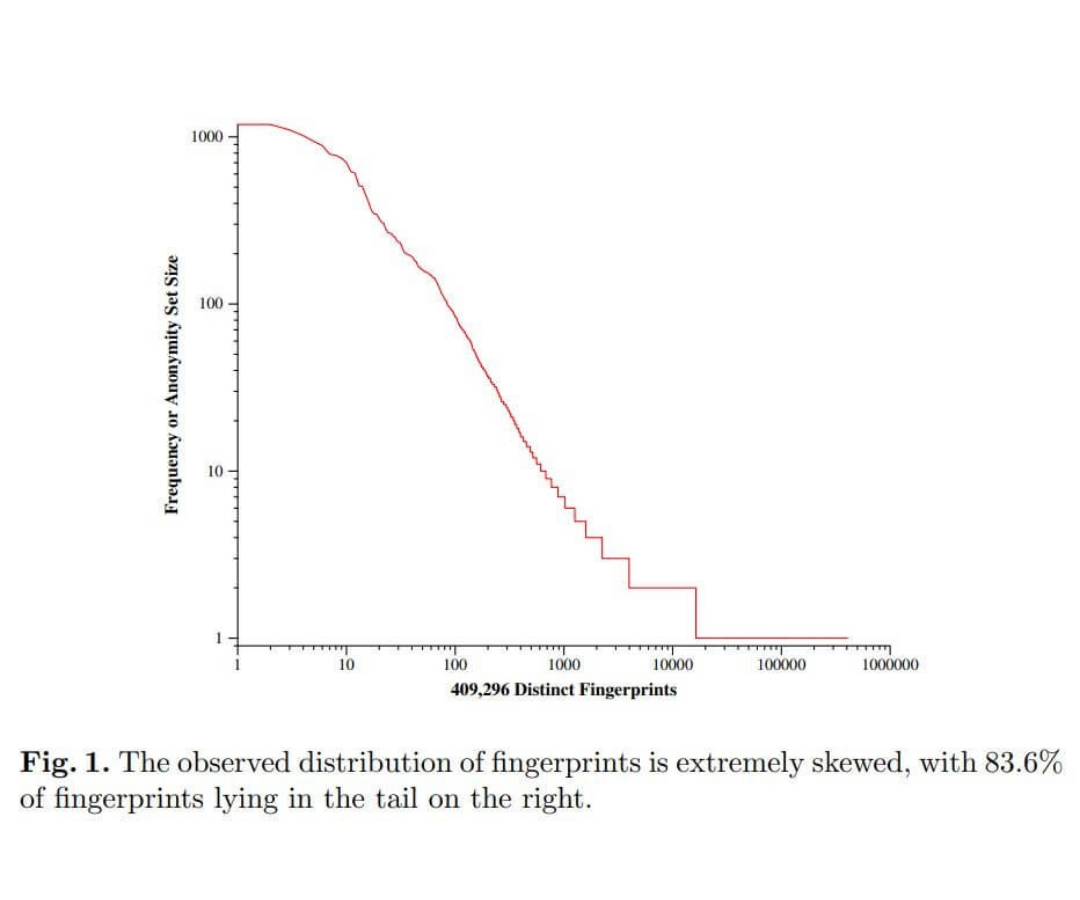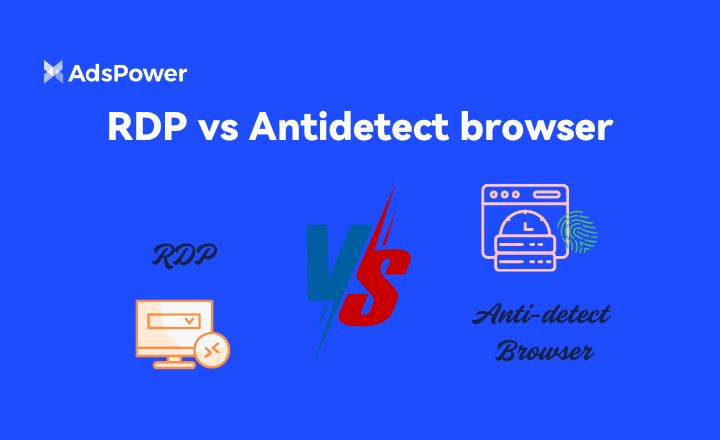¿Qué es la huella digital del navegador?

La huella digital del navegador es la tercera vía de rastreo de usuarios después de las cookies y las supercookies. La huella digital la inician los sitios web que analizan las solicitudes enviadas por los clientes HTTP para identificar de forma única un equipo específico mediante la recopilación de una huella digital. Los datos adquiridos de esta manera pueden usarse para rastrear continuamente a los usuarios incluso después de eliminar las cookies.
En este breve artículo, describiremos los fundamentos de la huella digital del navegador, cómo se utiliza para rastrear a los usuarios de internet y qué se puede hacer para reducir la probabilidad de ser reconocido a través de la información enviada.
¿Cómo funciona la huella digital del navegador?
La huella digital del navegador es un método activo de recopilación de datos que codifica los parámetros únicos del navegador y crea una firma digital. Los sitios web pueden agregar código JavaScript adicional (ya sea creando su propio script o comprándolo a proveedores externos) a la respuesta de una solicitud HTTP. El código JavaScript escanea todos los parámetros públicos del navegador y crea una firma digital única a partir de los datos.
Los datos obtenidos mediante el uso de código JavaScript adicional incluyen agentes de usuario, tamaño y resolución de pantalla, fuentes instaladas, plugins y extensiones, GPU/CPU, etc. Cada dato contribuye a la singularidad del dispositivo, lo que permite a los sitios web identificar un equipo en particular con mayor facilidad.
La identificación de navegadores es cada vez más común. Numerosos sitios web, incluidos los mejores sitios web, utilizan la huella digital para identificar usuarios nuevos y recurrentes. Motores de búsqueda como Google y Bing no son la excepción y han empleado diversas medidas para identificar usuarios específicos.
Las versiones avanzadas de huella digital del navegador pueden proporcionar aún más datos sobre el equipo, principalmente mediante el acceso a HTML5 Canvas y la solicitud de procesamiento gráfico. El uso de HTML5 Canvas puede revelar el sistema operativo, el navegador y la GPU de un equipo. HTML5 Canvas generalmente solicita al navegador que renderice una imagen específica. Debido a ligeras diferencias en la forma en que las GPU renderizan las imágenes, se pueden obtener detalles específicos del dispositivo.
Finalmente, las medidas extremas incluyen el análisis del desfase de reloj. El desfase de reloj se produce cuando las señales eléctricas de una fuente (principalmente del generador de reloj) llegan a diferentes componentes de forma desigual. Estas diferencias se ven afectadas por las variaciones de temperatura del hardware. Por lo tanto, con suficientes datos y análisis numérico, se pueden medir las diferencias de sesgo de reloj para determinar las especificaciones del hardware y muchos otros aspectos de una máquina.

Los cambios de temperatura se pueden utilizar para recopilar datos sobre los dispositivos utilizados por una máquina.
Fuente: Hot or Not: Fingerprinting hosts through clock skew
Comprender la singularidad del navegador
La singularidad del navegador es el factor determinante para reconocer a un usuario. En pocas palabras, la singularidad del navegador compara un dispositivo con las huellas digitales de muchos otros ordenadores para encontrar posibles duplicados. Si existen muy pocas copias en el conjunto de datos, el dispositivo se considera único.
Dado que se puede recopilar una gran cantidad de datos sobre un dispositivo y un navegador en particular, el sitio web podría identificar a un usuario como único incluso sin tener acceso a los datos de las cookies. Un estudio de The Electronic Frontier Foundation (EFF) descubrió que solo 1 de cada 286 777 navegadores compartirá su huella digital. Un nivel tan alto de singularidad del navegador significa que el mismo usuario puede ser fácilmente reconocido simplemente a través de la huella digital.

Fuente: ¿Qué tan único es su navegador?
Tenga en cuenta que la singularidad global de las huellas digitales podría ser aún peor, ya que los participantes del estudio probablemente eran más expertos en tecnología y La privacidad es más importante que la del usuario promedio de internet. Sin embargo, predecir con precisión la unicidad global de una huella dactilar parece casi imposible. Existe una limitación matemática evidente debido a la diferencia entre una muestra experimental y el conjunto global de huellas dactilares.
La existencia de huellas dactilares únicas puede parecer confusa a primera vista. Para el usuario promedio de internet, la mayoría de los navegadores pueden parecer bastante similares. Sin embargo, la unicidad suele estar determinada por la cantidad de información que divulgan los plugins. Por ejemplo, los datos de la versión de JavaScript suelen incluir numeración destinada únicamente a fines de depuración (p. ej., 1.6.0_17). Dado que se producen numerosos cambios menores durante el proceso de desarrollo, un solo plugin puede tener cientos de versiones diferentes. La combinación de los detalles del navegador, todos sus complementos y muchos otros puntos de datos puede crear millones de dispositivos identificables de forma única.
Mejora de la singularidad del navegador
La singularidad del navegador se puede probar mediante un proyecto desarrollado por EFF: Panopticlick. La prueba de huellas dactilares del navegador Panopticlick revelará todos los datos recopilados sobre tu dispositivo y te ofrecerá posibles opciones para protegerte.
Si no te gusta que las grandes empresas te rastreen, reducir la unicidad del navegador es la opción más efectiva para protegerte de las huellas dactilares:
Usa un navegador común. Usar navegadores poco comunes (por ejemplo, Comodo IceDragon) aumentará considerablemente la probabilidad de tener una huella dactilar única.
Evita los agentes de usuario personalizados. Los agentes de usuario únicos son una forma infalible de destacar.
Reduce la cantidad de plugins que usas. La singularidad se ve gravemente afectada por la cantidad de plugins instalados en un navegador.
Reduzca la lista de idiomas preferidos. Solicitar páginas en diferentes idiomas aumenta considerablemente la capacidad de reconocimiento del navegador. Por ejemplo, TorButton solo solicita versiones en inglés de los sitios web por defecto.
Use TorButton. TorButton implementa la mayoría de las funciones de seguridad del Navegador Tor en un navegador Firefox.
Desactive JavaScript. Desactivar JavaScript es una medida extrema que puede afectar a casi todos los sitios web. Sin embargo, la EFF descubrió que los usuarios de NoScript (una extensión que permite desactivar JavaScript) fueron los más resistentes a la huella digital.
Irónicamente, las soluciones y los complementos antihuella digital que supuestamente mejoran la privacidad y reducen la singularidad a menudo pueden tener el efecto contrario. Los complementos instalados (y sus versiones) se pueden detectar, lo que significa que a menudo contribuyen a la singularidad del navegador en lugar de reducirla.
Recomendamos experimentar con estas opciones, utilizar la prueba Panopticlick y navegar por internet para encontrar la combinación más adecuada. Usar todas las opciones mencionadas a la vez probablemente dañará muchos sitios web sin aclarar qué sucedió exactamente.
Conclusión
El rastreo de huellas digitales del navegador es cada vez más común como medida de seguimiento. A diferencia de las generaciones anteriores de herramientas de seguimiento (por ejemplo, las cookies HTTP), defenderse contra el rastreo de huellas digitales del navegador es mucho más difícil. Mejorar la singularidad del navegador es una opción, pero la medida más efectiva es deshabilitar JavaScript, que podría causar problemas en el lado del cliente al mostrar sitios web.
En este contexto, una buena manera de evitar la huella digital del navegador es usar la herramienta de administración del navegador. En nuestra próxima publicación, presentaremos AdsPower, una herramienta de administración del navegador asequible y efectiva, y mostraremos cómo puede ayudar en este caso.

La gente también leyó
- Las 8 mejores alternativas a Whoer en 2025 (herramientas de verificación de IP precisas y privadas)

Las 8 mejores alternativas a Whoer en 2025 (herramientas de verificación de IP precisas y privadas)
¿Buscas una alternativa a Whoer.net? Descubre nuestra lista de 2025 de las 8 mejores herramientas de verificación de IP para un análisis de huellas dactilares preciso y privado, y una experiencia de navegación optimizada.
- ¿Para qué se utiliza WebRTC? ¿Revela WebRTC tu dirección IP?

¿Para qué se utiliza WebRTC? ¿Revela WebRTC tu dirección IP?
Aprende qué es WebRTC, para qué se utiliza, si revela tu dirección IP y cómo protegerte con herramientas como los modos WebRTC de AdsPower.
- RDP frente a navegador antidetect: ¿Cuál es la diferencia y cuál es más seguro?

RDP frente a navegador antidetect: ¿Cuál es la diferencia y cuál es más seguro?
¿Utilizas RDP o un navegador antidetect para administrar tus cuentas? Consulta las diferencias entre RDP y un navegador antidetect y cómo elegir el adecuado.
- Desglosando qué es un agente de usuario: componentes de UA y cómo buscarlos

Desglosando qué es un agente de usuario: componentes de UA y cómo buscarlos
Descubra qué es un agente de usuario, sus componentes y cómo encontrar la cadena UA de su navegador en este blog.
- Cómo evitar la huella digital del navegador: una guía completa

Cómo evitar la huella digital del navegador: una guía completa
¿Te preocupa la huella digital del navegador? Nuestra guía te ayuda a evitarla, revelando la mínima información personal.



